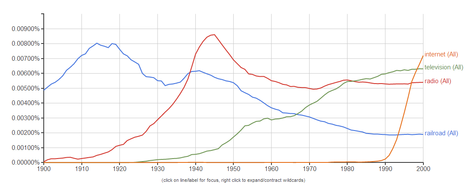 Source of graphic: online version of the WSJ article quoted and cited below.
Source of graphic: online version of the WSJ article quoted and cited below.
(p. A1) . . . , there has been a notable spike since 2009 in the number of technical reports whose author (p. A10) counts exceeded 1,000 people, according to the Thomson Reuters Web of Science, which analyzed citation data. In the ever-expanding universe of credit where credit is apparently due, the practice has become so widespread that some scientists now joke that they measure their collaborators in bulk–by the “kilo-author.”
Earlier this year, a paper on rare particle decay published in Nature listed so many co-authors–about 2,700–that the journal announced it wouldn’t have room for them all in its print editions. And it isn’t just physics. In 2003, it took 272 scientists to write up the findings of the first complete human genome–a milestone in biology–but this past June, it took 1,014 co-authors to document a minor gene sequence called the Muller F element in the fruit fly.
. . .
More than vanity is at stake. Credit on a peer-reviewed research article weighs heavily in hiring, promotion and tenure decisions. “Authorship has become such a big issue because evaluations are performed based on the number of papers people have authored,” said Dr. Larivière.
. . .
Michigan State University mathematician Jack Hetherington published a paper in 1975 on low temperature physics in Physical Review Letters with F.D.C. Willard. His colleagues only discovered that his co-author was a siamese cat several years later when Dr. Hetherington started handing out copies of the paper signed with a paw print.
In the same spirit, Shalosh B. Ekhad at Rutgers University so far has published 32 peer-reviewed papers in scientific journals with his co-author Doron Zeilberger. It turns out that Shalosh B. Ekhad is Hebrew for the model number of a personal computer used by Dr. Zeilberger. “The computer helps so much and so often,” Dr. Zeilberger said.
Not everyone takes such pranks lightly.
Immunologist Polly Matzinger at the National Institute of Allergy and Infectious Diseases named her dog, Galadriel Mirkwood, as a co-author on a paper she submitted to the Journal of Experimental Medicine. “What amazed me was that the paper went through the entire editorial process and nobody noticed,” Dr. Matzinger said. When the journal editor realized he had published work crediting an Afghan hound, he was furious, she recalled.
Physicists may be more open-minded. Sir Andre Geim, winner of the 2010 Nobel Prize in Physics, credited H.A.M.S. ter Tisha as his co-author of a 2001 paper published in the journal Physica B. Those journal editors didn’t bat an eye when his co-author was unmasked as a pet hamster. “Not a harmful joke,” said Physica editor Reyer Jochemsen at the Leiden University in the Netherlands.
“Physicists apparently, even journal editors, have a better sense of humor than the life sciences,” said Dr. Geim at the U.K.’s University of Manchester.
For the full story, see:
ROBERT LEE HOTZ. “Scientists Observe Odd Phenomenon of Multiplying Co-Authors.”The Wall Street Journal (Mon., Aug. 10, 2015): A1 & A10.
(Note: ellipses added.)
(Note: the online version of the story has the title “How Many Scientists Does It Take to Write a Paper? Apparently, Thousands.”)

